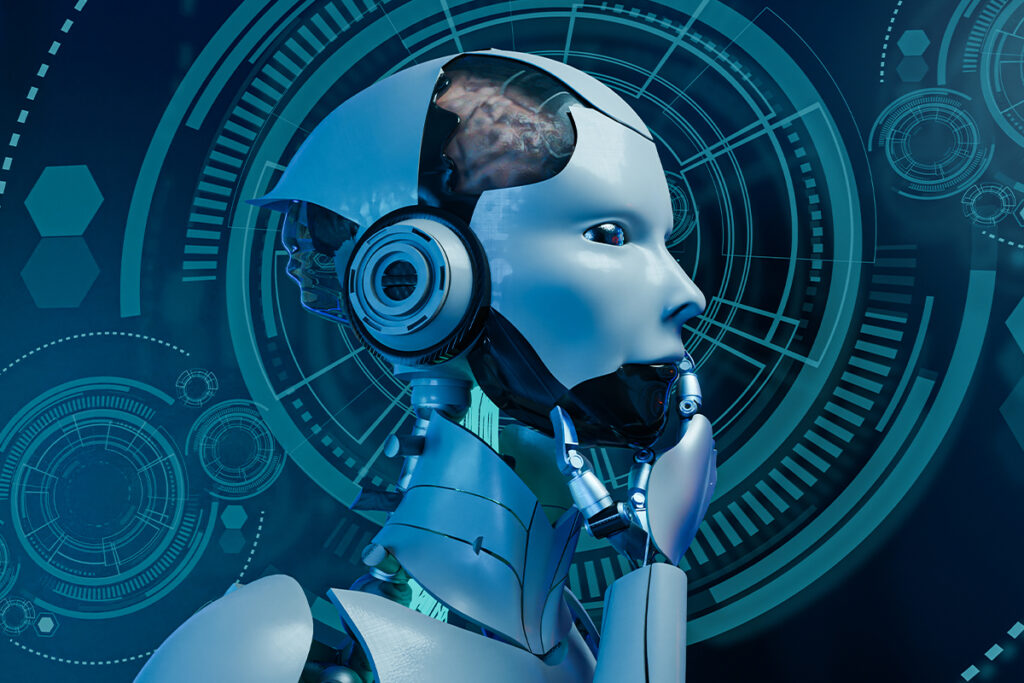
Machine Learning (ML) is transforming the way we interact with technology, enabling computers to learn from data and make intelligent decisions without explicit programming. From personalized recommendations on Netflix to self-driving cars, ML is everywhere!
What is Machine Learning?
Machine Learning (ML) is a branch of Artificial Intelligence (AI) that enables computers to learn patterns from data and make predictions or decisions without being explicitly programmed. It powers applications like voice assistants, recommendation systems, and fraud detection.
History of Machine Learning
1943 – Artificial Neural Networks (ANNs) Inspired by the Brain
- Warren McCulloch and Walter Pitts proposed the first mathematical model of a neural network, inspired by how neurons work in the human brain.
- This model demonstrated that artificial neurons could perform simple logical functions.
1950 – The Turing Test
- British mathematician Alan Turing published his famous paper “Computing Machinery and Intelligence,” introducing the Turing Test to determine whether a machine could exhibit human-like intelligence.
- This test laid the foundation for future AI research.
1951 – The First Neural Network Computer
- Marvin Minsky and Dean Edmonds built the first neural network computer, the SNARC, using vacuum tubes.
- It simulated a rat navigating a maze and showcased early reinforcement learning principles.
1957 – The Perceptron: The First Machine Learning Model
- Frank Rosenblatt, an American psychologist, developed the Perceptron, an algorithm inspired by biological neurons.
- The Perceptron could learn to recognize patterns, marking a significant step toward supervised learning.
- However, it was later criticized for its inability to solve complex problems (e.g., XOR logic function).
1960s – Early Symbolic AI (GOFAI: Good Old-Fashioned AI)
- Researchers focused on rule-based AI systems, where knowledge was encoded as a set of if-then rules.
- While promising, these systems struggled with complex tasks requiring adaptability.
1969 – Perceptron Limitations Identified
- Marvin Minsky and Seymour Papert published “Perceptrons,” highlighting the model’s limitations.
- This criticism led to a decline in neural network research, resulting in an AI Winter (a period of reduced funding and interest).
1980 – Knowledge-Based Systems Gain Popularity
- AI research shifted toward expert systems, which used predefined rules to make decisions (e.g., MYCIN for medical diagnosis).
1986 – Backpropagation Revives Neural Networks
- Geoffrey Hinton, David Rumelhart, and Ronald Williams introduced backpropagation, a technique that allowed multi-layer neural networks to adjust weights and improve learning.
- This breakthrough led to renewed interest in deep learning research.
1989 – The Birth of Reinforcement Learning
- Christopher Watkins introduced Q-learning, a foundational reinforcement learning algorithm used in robotics and AI-driven decision-making.
1995 – Support Vector Machines (SVMs) and Random Forests
- Vladimir Vapnik and Corinna Cortes developed Support Vector Machines (SVMs), an efficient classification algorithm.
- Leo Breiman introduced Random Forests, an ensemble learning technique improving decision trees.
1997 – IBM’s Deep Blue Defeats Chess Grandmaster
- IBM’s Deep Blue became the first AI to defeat a reigning world chess champion, Garry Kasparov.
- While rule-based, it showcased AI’s potential in complex decision-making.
2006 – The Rise of Deep Learning
- Geoffrey Hinton and his team introduced Deep Belief Networks (DBNs), demonstrating the power of unsupervised pretraining.
- This marked the beginning of the modern deep learning era.
2012 – ImageNet Breakthrough with Deep Neural Networks
- AlexNet, a deep convolutional neural network (CNN) developed by Alex Krizhevsky, Geoffrey Hinton, and Ilya Sutskever, won the ImageNet competition, reducing classification errors significantly.
- This breakthrough fueled the adoption of deep learning in computer vision and natural language processing (NLP).
2016 – AlphaGo Defeats Human Go Champion
- DeepMind’s AlphaGo, powered by reinforcement learning, defeated world champion Lee Sedol in the complex game of Go.
- This demonstrated the power of reinforcement learning combined with deep neural networks.
2020 – AI-Powered Language Models (GPT-3, BERT, and More)
- OpenAI released GPT-3, a transformer-based model capable of generating human-like text, showcasing the power of natural language processing (NLP).
- BERT (Bidirectional Encoder Representations from Transformers) improved search engines and conversational AI.
2022–2023 – The Rise of Generative AI
- OpenAI’s ChatGPT (based on GPT-4) and DALL·E revolutionized AI-generated content.
- AI tools now generate images, code, and videos, shaping industries from entertainment to education.
Future Trends in Machine Learning
- AI-driven automation across industries
- Explainable AI (XAI) for transparency in decision-making
- Edge AI for real-time machine learning on devices
- Quantum AI leveraging quantum computing for faster processing
Machine Learning vs. Deep Learning
Machine Learning: Involves structured data and algorithms that improve performance over time.Deep Learning: A subset of ML that uses artificial neural networks to process complex data, such as images and speech.
Machine Learning vs. Neural Networks
Machine Learning: Uses various algorithms, including decision trees, regression models, and clustering.Neural Networks: A specific type of ML model inspired by the human brain, used mainly in deep learning.
Machine Learning Methods
- Supervised Learning – Uses labeled data to train models (e.g., spam detection).
- Unsupervised Learning – Identifies patterns in unlabeled data (e.g., customer segmentation).
- Semi-Supervised Learning – Combines labeled and unlabeled data (e.g., speech recognition).
- Reinforcement Learning – Models learn by interacting with an environment and receiving rewards (e.g., robotics, game AI).
Common Machine Learning Algorithms
Neural Networks – Used in deep learning for image and speech recognition.Linear Regression – Predicts continuous values (e.g., house prices).Logistic Regression – Used for binary classification (e.g., spam or not spam).Clustering – Groups similar data points (e.g., customer segmentation).Decision Trees – Breaks down decisions step by step.Random Forests – An ensemble of decision trees for better accuracy.
Advantages of Machine Learning Algorithms
- Automates repetitive tasks
- Improves accuracy with large datasets
- Enables predictive analytics
- Powers real-time decision-making
Disadvantages of Machine Learning Algorithms
- Requires large amounts of data
- High computational costs
- Prone to bias if training data is flawed
- Lack of explainability in complex models
Real-World Machine Learning Use Cases
- Healthcare: Disease diagnosis, drug discovery
- Finance: Fraud detection, credit scoring
- Retail: Recommendation systems, demand forecasting
- Autonomous Vehicles: Self-driving car navigation
- Cybersecurity: Malware detection, threat analysis
Challenges of Machine Learning
- Data privacy and security risks
- Interpretability and explainability issues
- High resource and computational needs
- Ethical concerns in AI decision-making
How to Choose the Right AI Platform for Machine Learning
- Consider these factors when selecting an ML platform:
- Scalability – Can it handle large datasets?
- Ease of Use – Does it support no-code/low-code solutions?
- Integration – Is it compatible with other AI tools?
- Support for Algorithms – Does it include deep learning frameworks?
Popular ML Platforms: TensorFlow, PyTorch, Scikit-learn, AWS SageMaker, Google Vertex AI.
Conclusion
Machine Learning is revolutionizing industries and shaping the future of AI. Understanding its methods, algorithms, and challenges is crucial for businesses and researchers.
Are you excited about the potential of ML? Let’s discuss in the comments! 👇




